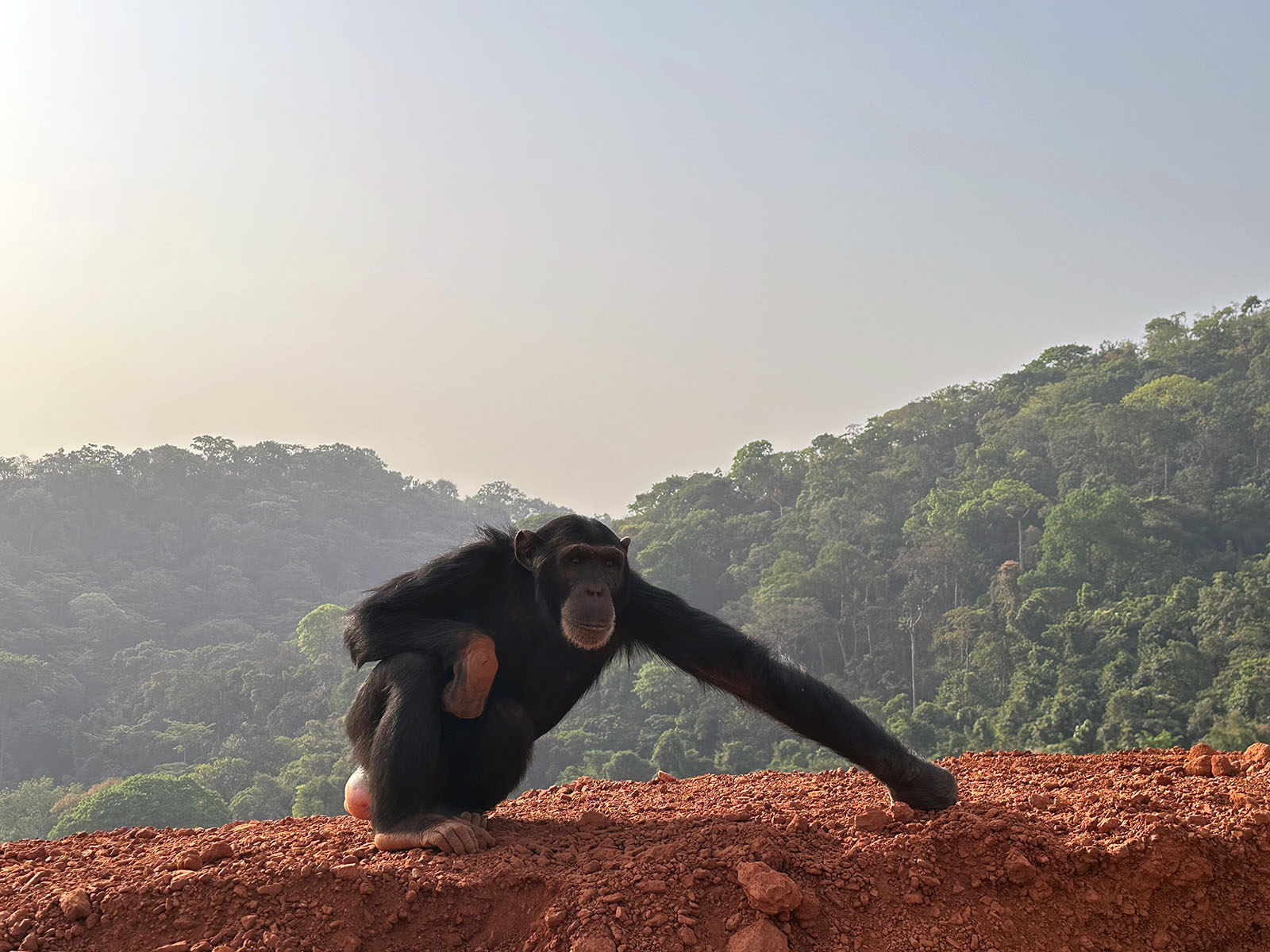Coexisting with a Western Chimpanzee at Simandou
Mining operations often take place in some of the most remote areas on Earth, from the vast expanse of the Gobi Desert to the rugged mountains of Argentina. In these unique and precious environments, managing our impact on biodiversity is as critical as delivering our product to customers.
The Simandou project in the south-east of Guinea, West Africa, is one these areas. The Simandou project in the south-east of Guinea, West Africa, is one these areas. Located in Guinea’s Forest region, Simandou is surrounded by unique flora and fauna that we, along with our partners, are committed to protecting in line with international standards.
Preserving Simandou’s chimpanzees
Simandou’s project teams have been studying the biodiversity of the Simandou Mountain Range for decades.
The Western Chimpanzee is one of the species known to be in the area and is listed as Critically Endangered by the International Union for Conservation of Nature. Ensuring a net gain of Western Chimpanzee habitat is a key commitment of Rio Tinto and SimFer, a joint venture we’re part of that is building Blocks 3 and 4 of the Simandou project, as well as some rail and port infrastructure.
Over many years, Rio Tinto and SimFer have implemented the International Finance Corporation’s Performance Standard 6 mitigation hierarchy to plan how to deliver a net gain in chimpanzee habitat. This included relocating much of the mine’s infrastructure, adding significant complexity to construction but protecting a large amount of habitat on the western side of the mountain where monitoring studies have confirmed that the local Western Chimpanzee population is concentrated.
Protecting an unexpected resident
Since September 2024, we’ve been closely monitoring the movements of a female Western Chimpanzee who has moved to the east side of the mountain and is spending the majority of her time in the Boyboyba Forest, an area we are protecting from mining activities. From the forest, she has increasingly gravitated towards the mine, which is under construction.
Our Biodiversity Manager at Simandou, Harry, explains that she could be behaving so unusually because she’s at an age where she may be looking for a new chimpanzee community to join.
“We first became aware of her as part of our comprehensive primate monitoring program in 2022.
She is a young female with an old hand injury, most likely from being caught in a hunter’s snare.“
M. Harry
Biodiversity Manager in Simandou

“Western Chimpanzees are not typically solitary animals, but young females do sometimes move away from their family groups in search of a new troop. We’ve seen her moving closer to the mine over the last six months and she now spends a significant amount of time in active construction areas.
We don’t know exactly why she’s seeking out human interaction, but we do know that this is unusual behaviour.”
M. Harry
Biodiversity Manager in Simandou
As construction activity at Simandou increases, the risk to her safety is growing.
“We’re worried that her safety is at risk from construction traffic, and disease is also a concern.
While she’s not physically isolated and is able to access different forest areas for food and water, we’re working hard to manage her welfare and develop a long-term solution.”
M. Harry
Biodiversity Manager in Simandou
Coexisting with care
Given she is a wild animal, minimizing direct interaction is critical. This rules out veterinary treatment for her injury, especially as it appears she has learnt to live with it, with limited impact to her mobility or physical health. Experts agree that coexistence, rather than relocation, is the most preferable outcome, even for an injured animal. So we’re studying her behaviour, and conducting genetic sampling to understand her relationship to other local populations, while we continue find the best option for her.
As part of the mine plan, we’ll be constructing large wildlife underpasses on the permanent haul road adjacent to the Boyboya Forest where this Chimpanzee resides.
But to mitigate the short-term risk, our construction teams are managing speed and access to the area, and have placed prominent warning signs to make drivers and other employees aware that she may be in the area.
“We’ve engaged dedicated wildlife experts to be permanently in the field to monitor her interactions with contractors and equipment and provide advice to the team when they come across her”
M. Harry
Biodiversity Manager in Simandou
We remain committed to learning as much as we can about our closest neighbour, and putting measures in place to do everything we can to safely coexist with her.
For more information on SimFer’s commitments to managing its biodiversity impact, visit our Simandou project page.